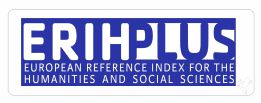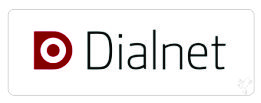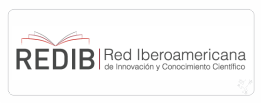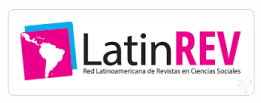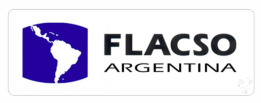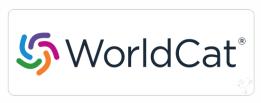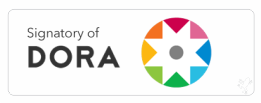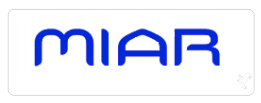Analysis of teaching jargon on educative technologies context. An approach from the documentary review
DOI:
https://doi.org/10.34069/RA/2025.15.05Keywords:
Jargon, teacher, documentary analysis, teaching, educational technologiesAbstract
Teachers' jargon is in a constant state of flux. Words come and go in their way of communicating. This article aims to explore the changes and annexes in the dialectal corpus that have occurred in the way primary school teachers express themselves in the context of the integration of educational technologies. To this end, six virtual classes recorded between 2020 and 2023 were analyzed. Each of these classes corresponds to each primary school level, from first to fifth grade, and a preschool class is also included. In this order of ideas, the objective is to analyze the changes in the teaching jargon from the integration of educational technologies and from a documentary perspective based on virtual classes.
As a methodology, a documentary review of audiovisual material recorded between 2020 and 2023 and that responds to each level of primary and preschool was established, for this purpose an observation and analysis matrix was built and validated by six experts in communication and education attached to universities in the city of Bogota. As a result, we reflect on the corpus of new words used by teachers in the teaching process through the screens and how they affect the pedagogical processes carried out in the educational context.
Downloads
References
Ausubel, D. P. (2002). Adquisición y retención del conocimiento. Una perspectiva cognitiva. Paidós ibérica.
Bruner, J. S. (1995). El proceso de la educación. Editorial UTHEA.
Cheshire, J. (2013). Sociolinguistics in the classroom: exploring linguistics diversity. In L. Milroy, J. Milroy (Ed.). Real English: The Grammar of English Dialects in the British Isles. (pp.32-51). Routledge.
Clark, R. C., & Mayer, R. E. (2016). E-Learning and the Science of Instruction: Proven Guidelines for Consumers and Designers of Multimedia Learning. Wiley.
Crystal, D. (2003). The Cambridge Encyclopedia of the English Language. Cambridge university press.
Engelbard, D. (1963). A conceptual framework for the augmentation of man´s intellect. VI Spartan books.
Fishman, J. (1988). Sociología del lenguaje. Ediciones Cátedra.
Fishman, J. (1972). Some basic sociolinguistic concepts. In Fishman. The Sociology of Language. An interdisciplinary social science approach to language in society. (pp. 15-28). Newbury house.
Freire, P. (1986). La dialogicidad: esencia de la educación como práctica de la libertad. En Freire, P. (Ed.). Pedagogía del oprimido. (pp. 103-158). Siglo XXI editores.
Gardner, H. (2001). La inteligencia reformulada. Las inteligencias múltiples en el siglo XXI. Paidós ibérica.
Garrison, D., & Anderson, T. (2002). Conceptual framework. In Garrison, D., Anderson, T. (Ed.). E-Learning in the 21st Century: A Framework for Research and Practice. (pp. 7-18). Au press.
Halliday, M. (1978). El lenguaje y el hombre social. En Halliday, M. (Ed.). El lenguaje como semiótica social (pp. 17-51). Fondo de cultura económica.
Holmes, J. (2013). Gender and age. In Holmes, J. (Ed.). An Introduction to Sociolinguistics. (pp. 159-185). Routledge.
Jaramillo Bedoya, J. (2013). Aspectos sociolingüísticos de la jerga en el ejército de Colombia. Pereira: Universidad Tecnológica de Pereira. Disponible en: https://hdl.handle.net/11059/3596
King, N., & Horrocks, C. (2019). Interviews in qualitative research. Sage.
Labov, W. (1983). La base social del cambio lingüístico. En Labov, W. (Ed.). Modelos sociolingüísticos. (pp. 325-400). Ediciones cátedra.
Leontyev, A. (1978). Activity and consciousness. In Leontyev, A. (Ed.). Activity and consciousness. (pp. 114-138) Englewood Cliffs. NJ: Prentice-Hall.
McLuhan, M. (1996). Comprender los medios: Las extensiones del hombre. Paidos.
Mendoza-Denton, N. (2008). Variation in a community of practice. In Mendoza-Denton, N. (Ed.). Homegirls: Language and Cultural Practice Among Latina Youth Gangs. (pp. 230-264). Blackwell publishing.
Montessori, M. (1912). Los métodos pedagógicos utilizados en las “casas de niños”. En Montessori, M. (Ed.). El método montessori. (pp. 72-85) Dover publicaciones
Mora, L. A. (2023). Cómo validar una entrevista de preguntas abiertas: una propuesta para investigación filosófica empírica. Revista Saberes Educativos, 11, 1-25.
Orozco, G. (1996). Televisión y audiencia. Un enfoque cualitativo. Ediciones de la torre.
Piaget, J. (1936). El problema biológico de la inteligencia. En Piaget, J. (Ed.). El nacimiento de la inteligencia en el niño. (pp. 12-28). Biblioteca de bolsillo.
Prensky, M. (2010). Nativos e inmigrantes digitales. Distribuidora SEK, S.A. https://acortar.link/4e3znP
Reigeluth, C. M. (2012). Instructional Theory and Technology for the New Paradigm of Education. Revista de Educación a Distancia, 32, 1-18.
Repetto, E., & Pérez, J. C. (2004). Aproximación a la evaluación breve de la inteligencia emocional. En Heredia, E., Montañes, M., Chirivella, E., Carbonell, E., Agulló, C., Gómez, C. (Ed.). Motivos, emociones y procesos representacionales de la teoría a la práctica (pp. 325-334) Fundación Universidad-Empresa ADEIT.
Ricoeur, P. (1975). Metáfora y semántica de la palabra. En Ricoeur, P. (Ed.). La metáfora viva. (pp. 137-182) Editorial trotta.
Sampieri, R., Fernández, C., & Baptista, P. (2014). Metodología de la investigación. McGraw Hill.
Selwyn, N. (2011). Does technology improve learning. In Selwyn, N. (Ed.). Education and Technology: Key Issues and Debates. (pp. 64-91) Continuum.
Skinner, B. F. (1970). La tecnología de la enseñanza. En Skinner, B. F. (Ed.). Tecnologías de la enseñanza. (pp. 39-58) Harvard University press.
Tannen, D. (1990). Different words, different worlds. In Tannen, D. (Ed.). You Just Don’t Understand: Women and Men in Conversation. (pp.23-48). Ballantine books.
Trudgill, P. (1983). Sociolinguistics and dialectology. In Trudgill, P. (Ed.). On Dialect: Social and Geographical Perspectives. (pp. 31-51) New York university press.
Vygotsky, L. (1981). La teoría de Stern sobre el Desarrollo del lenguaje. En Vygotsky, L. (Ed.). Pensamiento y Lenguaje (pp.58-67). La Pléyade.
Published
How to Cite
Issue
Section
License
Copyright (c) 2025 Walter Leonardo Martínez Ruiz, Zully Alejandra Cubides Guzmán

This work is licensed under a Creative Commons Attribution 4.0 International License.





